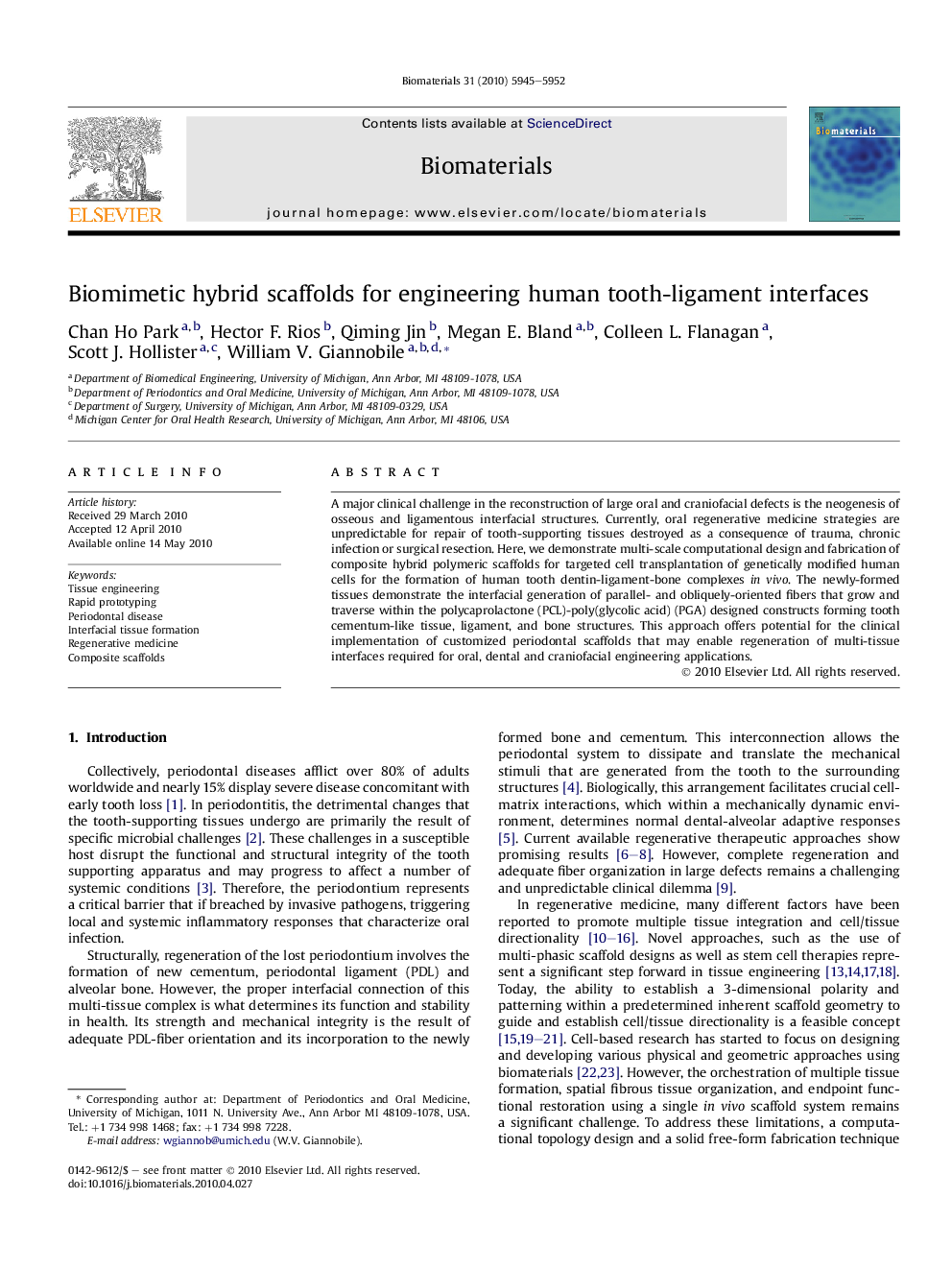| Article ID | Journal | Published Year | Pages | File Type |
|---|---|---|---|---|
| 9391 | Biomaterials | 2010 | 8 Pages |
A major clinical challenge in the reconstruction of large oral and craniofacial defects is the neogenesis of osseous and ligamentous interfacial structures. Currently, oral regenerative medicine strategies are unpredictable for repair of tooth-supporting tissues destroyed as a consequence of trauma, chronic infection or surgical resection. Here, we demonstrate multi-scale computational design and fabrication of composite hybrid polymeric scaffolds for targeted cell transplantation of genetically modified human cells for the formation of human tooth dentin-ligament-bone complexes in vivo. The newly-formed tissues demonstrate the interfacial generation of parallel- and obliquely-oriented fibers that grow and traverse within the polycaprolactone (PCL)-poly(glycolic acid) (PGA) designed constructs forming tooth cementum-like tissue, ligament, and bone structures. This approach offers potential for the clinical implementation of customized periodontal scaffolds that may enable regeneration of multi-tissue interfaces required for oral, dental and craniofacial engineering applications.
